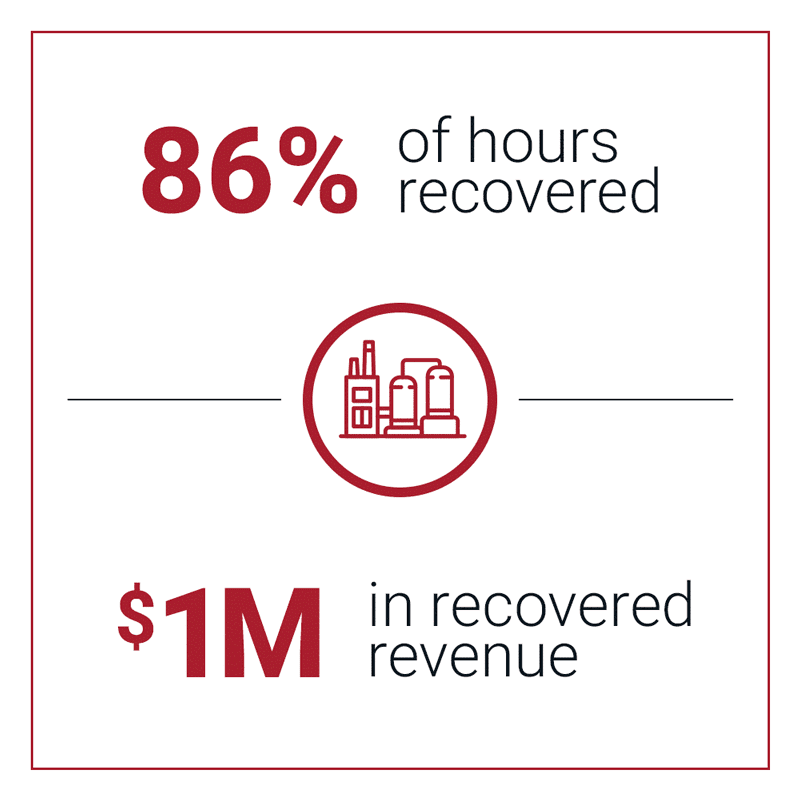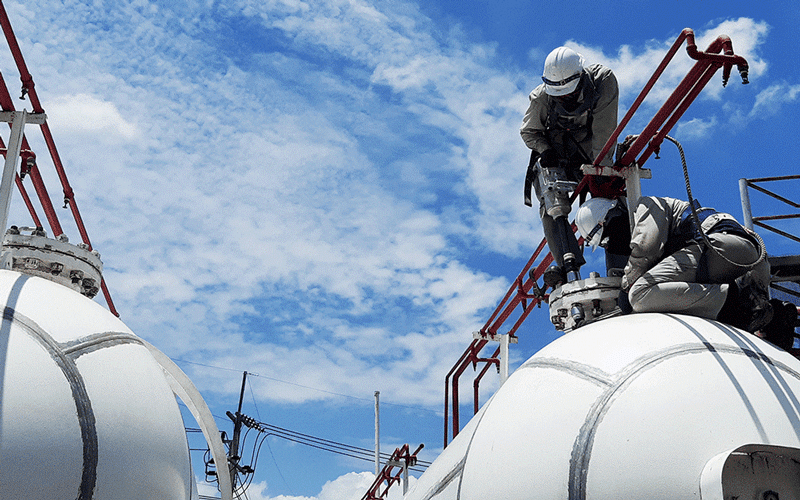Digital transformation has quickly become an imperative for the oil and gas industry, and connected technologies have proven especially valuable for maximizing uptime and revenue. When production is taken offline, getting back up and running quickly, efficiently and safely is key to mitigating costs and preventing future unplanned downtime.
Whether it’s a planned turnaround, shutdown or an unforeseen outage, these short-term operations face many challenges. This includes needing visibility into workplace productivity and safety for regular employees, as well as contract workers that are less familiar with the facility and standard safety procedures.
A comprehensive digital worksite solution, focused on optimizing both productivity and safety metrics, enables plants to increase their operational efficiency, reduce risk and minimize revenue impact during both turnarounds and shutdowns.
What is a Digital Worksite?
A digital worksite leverages data from connected IoT devices throughout the worksite to derive insights that help oil and gas companies understand where productivity losses are occurring across their operations. These insights enable smart decisions based on real-time information to improve productivity, safety and profitability.
For example, equipping each worker with a connected personal safety monitoring device protects them from harm, enabling them to work safely and efficiently even if they are a contractor that is unfamiliar with the worksite, ultimately reducing risk and preventing costly accidents during the turndown project.
In addition, the ability to quickly identify and resolve operational bottlenecks can save hours or days of work required during a turnaround which then gets assets back online faster, potentially adding millions in revenue that otherwise would have been lost.
A Digital Worksite in Action
In a recent use case, a multinational oil and gas company deployed a digital worksite solution backed by data science to address both safety and productivity concerns for several turnaround projects. The company equipped each worker with a personal safety and gas detection device. These connected devices not only could detect hazardous gases and keep workers safe at the job site, but also monitor worker activity and mobility via GPS technology.
Each wearable gas detector would collect and send its location-based data to the Cloud in real time, making it easy to visualize on-site worker movement and gain insights into the entire operation. In addition to being able to respond to bottlenecks as they occurred, the data could also be used for long-term analysis and optimization of future turnaround projects.
For example, in this use case, the company deployed the digital worksite solution for two consecutive turnaround projects to identify problem areas during the first turnaround, establish solutions in-between, and implement and monitor improvements during the second turnaround.
After the first turnaround, it was apparent that there were many opportunities to improve productivity by minimizing worker movement across the worksite. Specifically, general site travel caused workers to lose an average of 10 percent of their workday outside of the expected areas of work. In addition, the team was able to visualize unexpected movement around the site – such as trips to pick up tools or long walks to the lunch area – that were taking workers away from productivity zones for up to an hour at a time. This not only decreased productivity but also posed additional safety risks, since workers were in unexpected areas.
Armed with this information, the management team undertook a series of proactive initiatives across contractor onboarding and training. They also improved signage and distributed maps showing where auxiliary areas were located across site, such as tool cribs, the lunch area, bathrooms and more. They then implemented these initiatives on the second turnaround and deployed the same digital worksite solution to measure improvement against their previous baseline.
The result: The company recovered 86 percent of the lost man-hours from the first turnaround, saving an average contractor cost of approximately $45/hour per worker. Additionally, schedule certainty was improved, allowing refinery startup to occur four days earlier, recovering more than $1 million in revenue.

What to Look for in a Digital Worksite Solution
Fast, Simple Deployment
For short-term, high workforce capacity projects and unexpected shutdowns, speed to deployment is essential to accelerate the time to value. Rapidly connected wearable devices for each worker and drop-and-go portable area monitors are ideal for these applications, but it’s important to choose devices that work out of the box with minimal setup, such as the challenges of establishing a reliable mesh network. For example, some personal gas detection devices are available with pre-calibrated sensor cartridges that can be easily swapped in and out depending on the site requirements, with no additional configuration required. There are also area monitors that can be set up in any location and instantly connected to the Cloud at the push of a button, greatly reducing required worker hours to set up a safety ecosystem. In addition, look for a standalone solution that does not require time consuming and labor-intensive infrastructure changes, which typically result in additional burdens on your IT team and subsequent time delays.
Devices with Long Battery Life
Safety and monitoring devices should have a long battery life to ensure continuous gas detection monitoring throughout the project to avoid time wasted frequently checking and replacing batteries. In addition, for work in confined spaces, area monitors with long device battery life reduce the need to swap out equipment and pull new permits, so work can be completed faster without compromising safety. Choose devices whose battery life can be measured in weeks or months, not days or hours.
Flexibility to Buy, Lease or Rent Equipment
The flexibility to buy, lease or rent equipment gives added options for operations managers, safety managers and contractors to acquire devices, as needed, depending on both the short- or long-term requirements. For turnarounds in particular, the ability to rent equipment only for the duration of the project when the devices are needed is a smart, cost-saving measure.
Real-Time Visibility
The ability to visualize where workers are, and quickly respond to safety alerts, is key to maintaining high levels of safety. Look for a fully integrated digital worksite solution that instantly aggregates data from each safety and gas detection device in the field for true real-time visibility.
Analytics and Insights
The data from connected devices is only as valuable as the insights you are able to derive from it. A robust and intuitive analytics and insights platform should make it easy to visualize key metrics, including worker time spent in productivity zones, heat maps and transition times (time spent traveling to and from points across the site like tool sheds and lunch areas). For example, understand how your entire workforce moves throughout the site and determine how many hours are spent and where to optimize resource deployment and streamline workflows.
Safety and Productivity
When planning a successful turnaround project or responding to an unplanned shutdown, safety and productivity go hand in hand; both are critical to getting back online quickly and minimizing lost revenue due to halts in production. A digital worksite solution that spans both productivity and safety provides the necessary data and insights to make real-time decisions and long-term optimizations that improve operational efficiency.
Headline photo courtesy of Blackline Safety.
Bob Wicker, director, North America Rentals of Blackline Safety, has an extensive background as a safety professional based in Houston, Texas. Prior to joining Blackline, Wicker held roles as general manager and director for a multinational services company providing oversight and direction to EH&S, risk management and operational teams across North America for 21 years, with a primary focus on downstream and upstream oil and gas sectors.
Oil and gas operations are commonly found in remote locations far from company headquarters. Now, it's possible to monitor pump operations, collate and analyze seismic data, and track employees around the world from almost anywhere. Whether employees are in the office or in the field, the internet and related applications enable a greater multidirectional flow of information – and control – than ever before.






1 comment
Comments are closed.